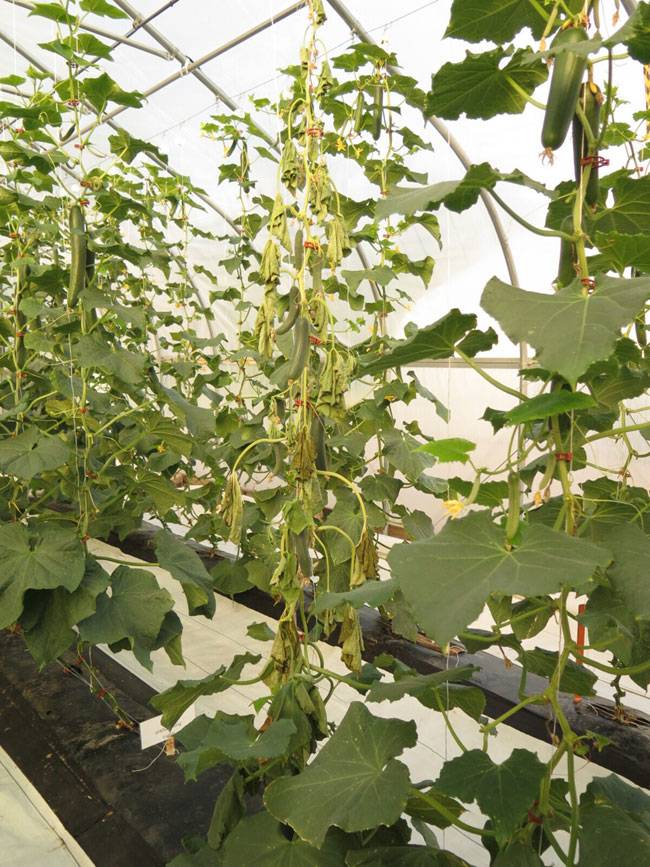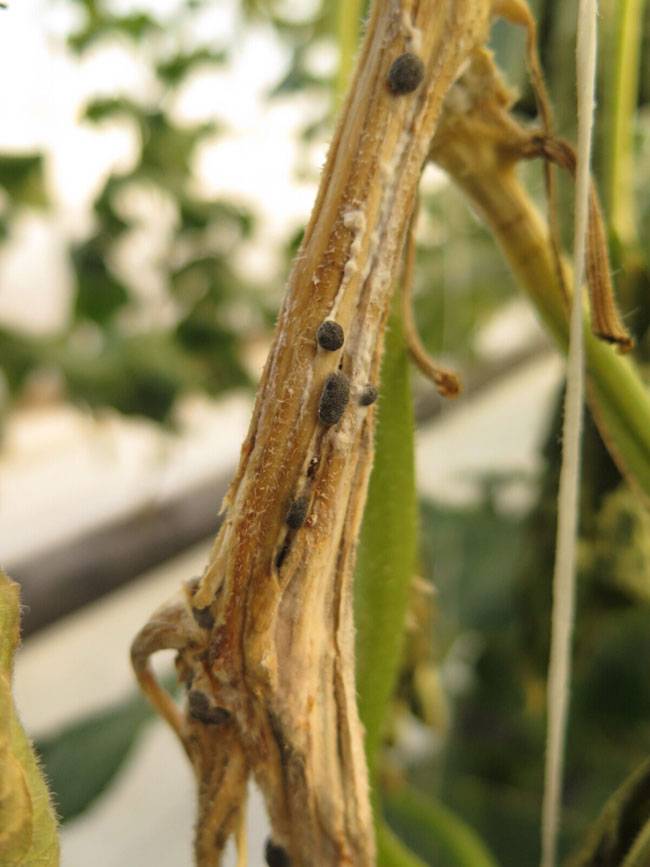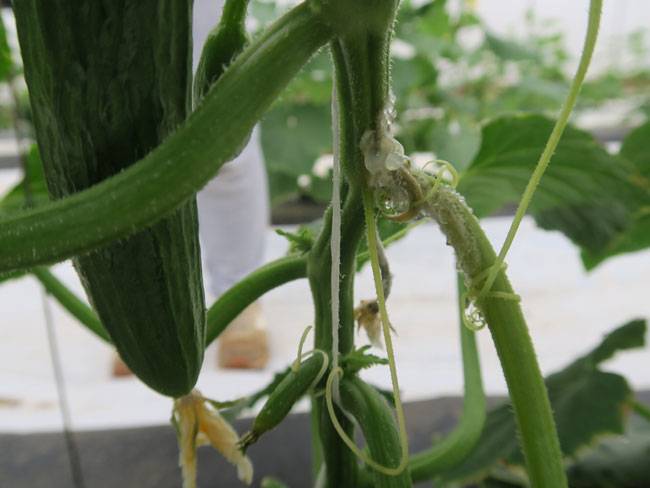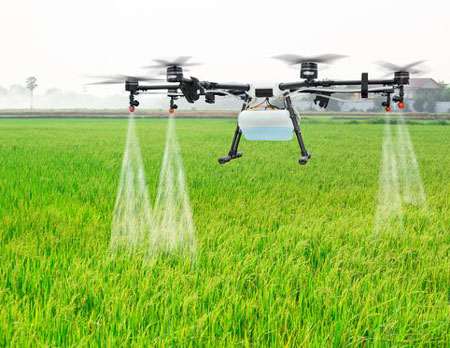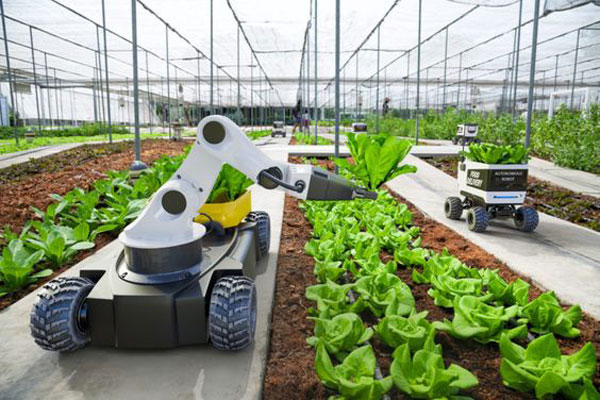White mold, also known as stem rot, is caused by the fungus Sclerotinia sclerotiorum. While it is more common in greenhouses, it can affect cucumbers grown in fields under favorable conditions. This disease primarily targets older vines and is most destructive when conditions support fungal growth.
Key Details About White Mold
1. Cause
- Pathogen: Sclerotinia sclerotiorum (a fungus).
2. Symptoms
- Stem Blight:
- Initial infection on stems, especially older vines.
- White cottony mold appears on affected areas.
- Stems dry out and wither, forming small black structures called sclerotia in the rotting tissue.
- Fruit Rot:
- Infected fruits become watery, soft, and later develop sclerotia.
3. Disease Development
- Optimal Temperature:
- Growth occurs between 7°C and 30°C, with the ideal range being 20–25°C.
- Environmental Conditions:
- Disease is favored by humid environments and poor air circulation.
- Greenhouses are particularly vulnerable due to controlled humidity and temperature settings.
Management Strategies
Cultural Practices:
- Rotate crops with non-host plants to reduce fungal inoculum in the soil.
- Improve air circulation by providing adequate plant spacing and pruning.
- Avoid excessive irrigation, especially in greenhouses.
Sanitation:
- Remove and destroy infected plant debris, as sclerotia can survive in soil and debris for extended periods.
- Clean tools and equipment to prevent the spread of fungal spores.
Chemical Control:
- Apply fungicides specifically targeting Sclerotinia sclerotiorum during early disease stages or as a preventive measure.
Preventive Measures:
- Avoid planting in areas with a history of white mold.
- Use drip irrigation to minimize water splashing on stems and fruits.
- Maintain greenhouse conditions below 20°C when possible to limit fungal growth.
White mold is a manageable but potentially destructive disease, particularly in greenhouse cucumbers. By focusing on cultural practices, sanitation, and targeted fungicide applications, growers can minimize losses and maintain healthy crops. Proper environmental control is key to reducing the risk of infection.
